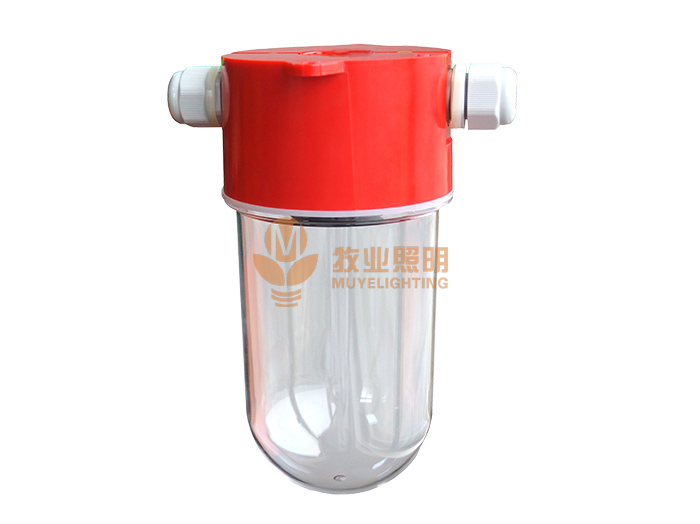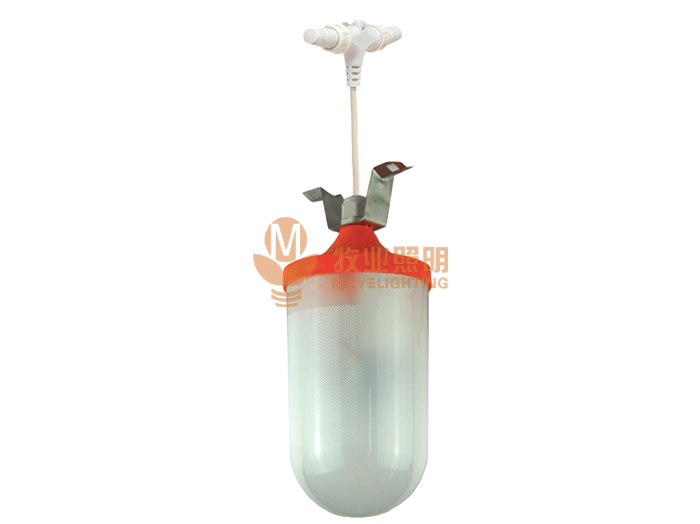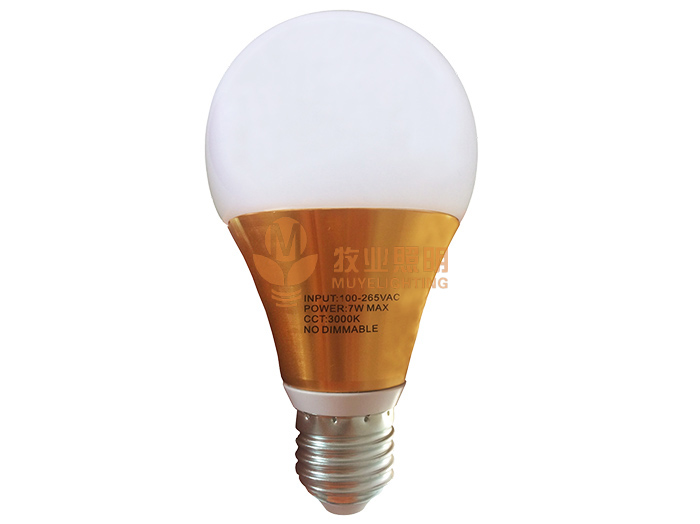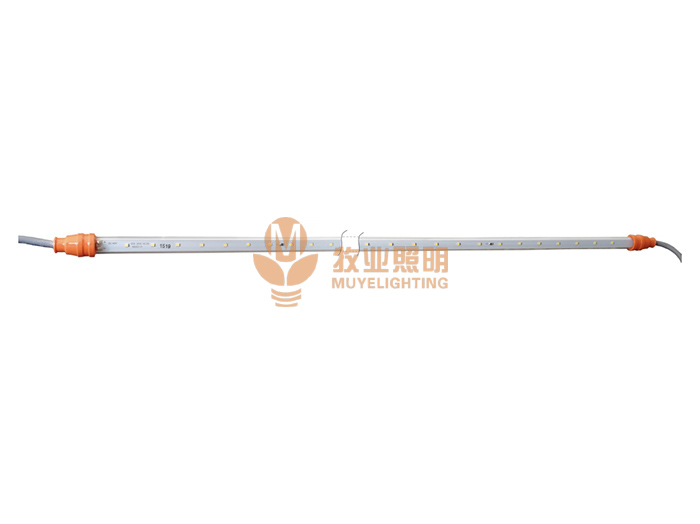Guide to the use of LED lights in chicken farms
Time:2020-11-13 16:30Click:
The poultry industry is usually very conservative, and it took a while to adopt LED technology. But now the poultry industry has embraced LED technology and its energy-saving benefits. In the past five years, more and more perfect LED technology has gradually met the lighting needs of poultry industry.
A good LED lamp can save 80% to 85% energy than incandescent lamp. But not all LED lights are the same, and aquaculture practitioners should spend time studying LED lights before buying them. All LEDs are more expensive than incandescent ones, so you don't want to make mistakes and waste money.
Lighting is an important environmental factor in poultry industry. Lighting affects production efficiency, animal welfare and growth rate. The four elements of light are intensity, period, source and spectral range. The color of light depends on the different wavelengths in the visible spectrum.
White light contains all the wavelengths in the visible spectrum. But even if they are white light, they will show different color temperature due to different energy emitted by different wavelengths. Therefore, poultry operators should not try to use LED bulbs without asking for details or consulting a trusted person.
Led field test
Fortunately, many well-known universities in the United States, including Mississippi State University, Auburn University, University of Georgia, University of Arkansas, University of Maryland, University of Delaware, etc., had agricultural extension personnel carry out experiments on LED when they first entered the poultry industry. After numerous field tests, these promoters evaluated a variety of different LED products, and provided fair evaluation results for product cost analysis, investment recovery potential and service life. These assessment results are free of charge, so please feel free to ask for and study carefully to help you make the right purchase decision.
Please do not choose LED bulbs that have not been field tested in the chicken house. Due to the influence of dust, humidity and ammonia, the environment of chicken house is much harsher than that of houses and merchants. Some light bulbs are not designed for such an environment and cannot withstand the test of these factors.
LED energy saving performance is impeccable. The question that breeders have about LEDs is, will poultry behave as well under LEDs as they do under incandescent lights?
The answer is yes, but only if there is sufficient light during hatching and growing, the dimmer is working properly, and the poultry are well cared for. In this way, poultry will perform as well under LED lights as under any other light source.
What is the effect of LED on poultry?
Many breeders switch from compact fluorescent lights to LED lights and find that poultry are becoming more docile. This may be because LEDs don't flash like fluorescent lights. Because chicken's eyesight is sharper than human's, chicken is more vulnerable to the influence of flashing lights.
To some extent, LED technology is prior to dimmer technology, so not all dimmers can adapt to LED bulbs. As a result, LED bulbs cannot be dimmed linearly like incandescent lamps (linearity means that when the dimmer is dimmed by 20%, the brightness of the bulb will also be dimmed by 20%). On LED lights, the dimmer may need to be adjusted a lot for the led to show a little dimming. Dimmer manufacturers are also struggling to catch up, but there are still many old dimmers on the market, which need to be upgraded to accurately adjust the brightness of LED lights.
Some dimmers may only need to install an upgrade chip to work properly, but some dimmers are too old and can only be replaced by new products to adapt to more advanced LED technology.
Choose the right color for LED. The color temperature is expressed in Kelvin units (open). Warm light ranges from 2700 to 3000, similar to incandescent or high pressure sodium lights with an orange red color. Natural light ranges from 3400 to 3700. Cool light with blue and white, range from 5000 to 6000.
At present, the color temperature of the most widely used LED lamp in broiler breeding is 5000, while the color temperature of 2700 is the most widely used in breeding chicken breeding. Again, not all LED lights are suitable for farming. A high quality omni-directional LED lamp is not the best choice for a chicken house.
About 40% of the omni-directional LED lights can illuminate the roof and walls, which may be good for a house, but it is not practical for a henhouse, which requires most of the light to be directly on the ground.
For this reason, you may need to buy high wattage LED lights to meet the needs of chickens, which are more expensive than low wattage ones. Most LED lights sold in hardware stores or discount stores are omnidirectional.
Even the cheapest LED lights are more expensive than incandescent ones, so make sure that the led you buy is what you need. You need to understand the units of luminous flux and the significance of luminous flux readings in use. Your after-sales technician may come to the chicken house with an illuminometer to measure the lighting effect.
Foot candle is a unit of light intensity, which can be used to measure the light intensity of different light sources. One foot candle is equal to one lumen of luminous flux falling over a square foot area. One lumen is equal to the total luminous flux produced by one candle at a solid angle, which reflects the brightness. For example, a 10 watt 19 a non dimmable LED bulb may have a brightness of 900 lumens; a 6 watt 19 amp dimmable LED bulb may have a brightness of 530 lumens.
Chicks usually need 2 foot candles or more light within 4-14 days of life, depending on breed and nutrition program. But the light must be turned to a very dark level (0.03 foot candle or less) at a later stage to keep the chickens growing well. The appropriate light intensity is






